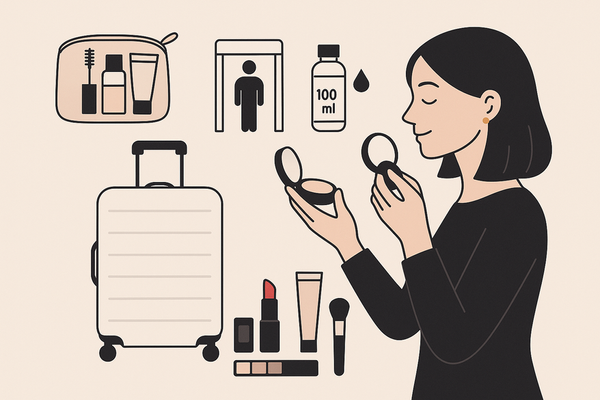Breakdown of Makeup Ingredients: A Guide to Cosmetic Formulations with AI Insights
Explore the breakdown of makeup ingredients using AI-driven insights to choose safer, high-performance cosmetics for skin health and beauty.

Estimated reading time: 8 minutes
Key Takeaways
- Ingredient roles: binders, emollients, pigments, preservatives, emulsifiers, thickeners.
- Ingredient categories: active, inert/base, supportive agents, pigments and colorants.
- AI-driven analysis reads INCI lists, flags hazards, decodes scientific names.
- Consumer tips: favor short lists, patch-test, seek hypoallergenic labels.
Table of Contents
- Understanding Makeup Formulations
- Detailed Breakdown of Makeup Ingredients
- How AI Assists in Ingredient Analysis
- Consumer Relevance and Safety Concerns
- Conclusion
Understanding Makeup Formulations
Makeup formulation is the precise mix of chemical and natural substances used to create a cosmetic. It must balance:
- Stability (long shelf life without separation)
- Texture (smooth glide, spreadability)
- Safety (non-toxic, low irritation)
- Performance (pigment payoff, hydration, shine)
Core components include:
- Binders and Carriers: water, plant oils, waxes to carry actives and pigments.
- Emollients: silicones like dimethicone, plant oils, beeswax for softness and spread.
- Preservatives: parabens, phenoxyethanol to prevent microbial growth.
- Pigments: iron oxides, titanium dioxide, mica for color and UV block.
- Emulsifiers: polysorbates, cetyl sulfate to bind oil and water.
- Thickeners and Stabilizers: xanthan gum, carbomers to control viscosity.
Understanding these building blocks reveals why a formula feels rich or light, sheer or full-coverage.
Detailed Breakdown of Makeup Ingredients
Below are four main categories, their roles, common examples, INCI names, and typical concentrations:
- Active Ingredients
Provide targeted benefits:
• Retinol (INCI: Retinol; 0.1–1.0%)
• Hyaluronic Acid (INCI: Sodium Hyaluronate; 0.1–2.0%)
• Vitamin C (INCI: Ascorbic Acid; 5–20%) - Inert/Base Substances
Serve as carriers or solvents:
• Purified Water (INCI: Aqua; 50–80%)
• Propylene Glycol (INCI: Propylene Glycol; 2–10%)
• Sunflower Oil (INCI: Helianthus Annuus Seed Oil; 5–20%) - Supportive Agents (Adjuvants)
Ensure stability and texture:
• Emulsifiers (Polysorbate 20; 1–5%)
• Preservatives (Phenoxyethanol; 0.5–1.0%)
• Thickeners (Xanthan Gum; 0.1–1.0%) - Pigments and Colorants
Provide shade and opacity:
• Iron Oxides (INCI: CI 77491/77492/77499; 1–15%)
• Titanium Dioxide (INCI: Titanium Dioxide; 2–25%)
• Synthetic Dyes (Red 7 Lake; 0.1–5%)
Comparing these classes helps you spot high-wax mascaras or potent retinol serums at a glance.
How AI Assists in Ingredient Analysis
- Automated Ingredient Scanning: AI reads full INCI lists and flags allergens.
- Consumer-Friendly Decoding: translates “Sodium Laureth Sulfate” into plain terms.
- Predictive Function and Purity: estimates concentration from list position.
- Big-Data Trend Spotting: analyzes millions of formulas for risk factors.
Case Study (Hypothetical): ScanMyShade App
1. The user scans a lipstick label.
2. AI parses 30+ ingredients, highlights “Parabens: potential allergen,” “Titanium Dioxide: physical sunscreen,” “Mica: natural shimmer.”
3. A safety rating appears (e.g., 7/10).
4. The app suggests paraben-free alternatives.
Watch how AI-powered ingredient analysis works:
For more on AI-led ingredient insights, visit AI cosmetic ingredient analysis.
Try it yourself with Makeup Check AI to decode ingredients and flag irritants instantly.
Consumer Relevance and Safety Concerns
Ingredient literacy empowers safer choices:
- Irritants and Allergens: parabens, artificial fragrances, certain dyes.
- Sensitive and Acne-Prone Skin: prefer non-comedogenic ingredients, avoid heavy oils.
- Clean vs. Conventional: “clean” often means no sulfates, phthalates, synthetic dyes.
Regulatory Overview
• INCI Labeling lists ingredients by weight (top five are bulk of the formula).
• EU bans certain substances; FDA focuses on clear labeling and monitoring.
Practical Tips for Consumers
1. Favor short, recognizable ingredient lists.
2. Use AI-powered safety apps.
3. Check expiration and avoid vague “fragrance.”
4. Patch-test before full application.
5. Look for “Fragrance-free,” “Hypoallergenic,” “Dermatologist tested.”
Conclusion
A clear breakdown of makeup ingredients reveals the purpose behind every binder, emollient, active, and pigment. Armed with this knowledge and AI-driven analysis, you can flag allergens, decode complex INCI names, and select products that deliver both safety and performance. Start scanning your collection with an AI tool today to build a personalized, high-performance routine backed by transparency.
FAQ
- What does “INCI” stand for?
A: International Nomenclature of Cosmetic Ingredients. - How can AI help me select safer cosmetics?
A: It parses INCI lists, flags hazards, and suggests alternatives in seconds. - Are “clean” beauty products always better?
A: Not necessarily; always review the ingredient list for irritants. - What should I look for on a skincare label?
A: Seek non-comedogenic, hypoallergenic tags and avoid vague “fragrance.”




